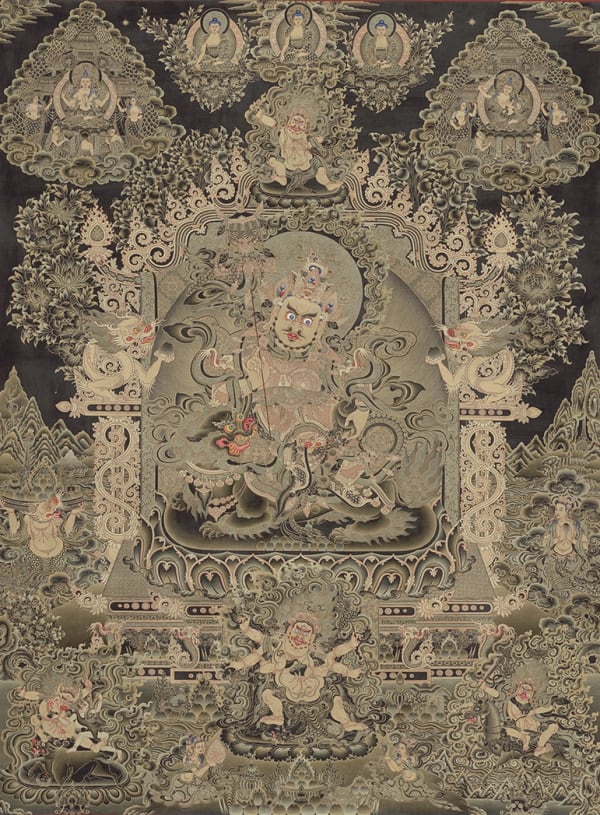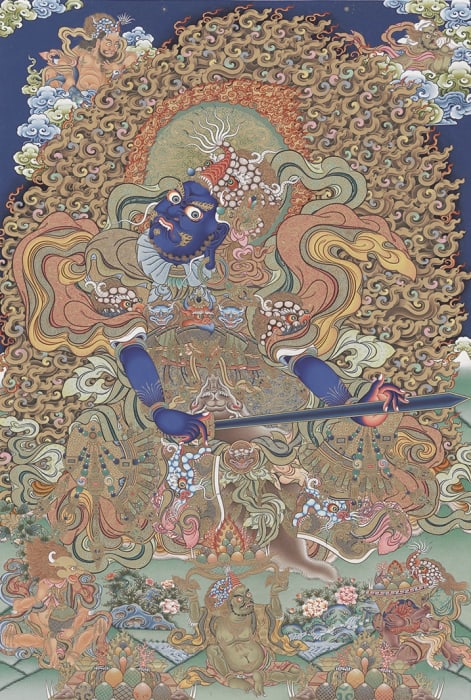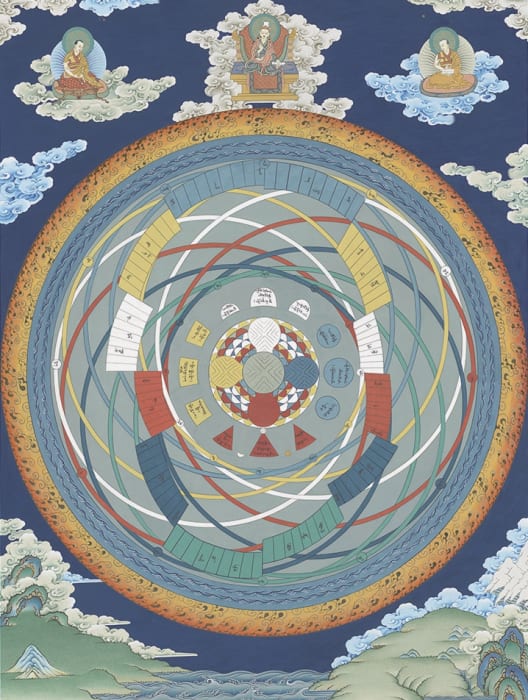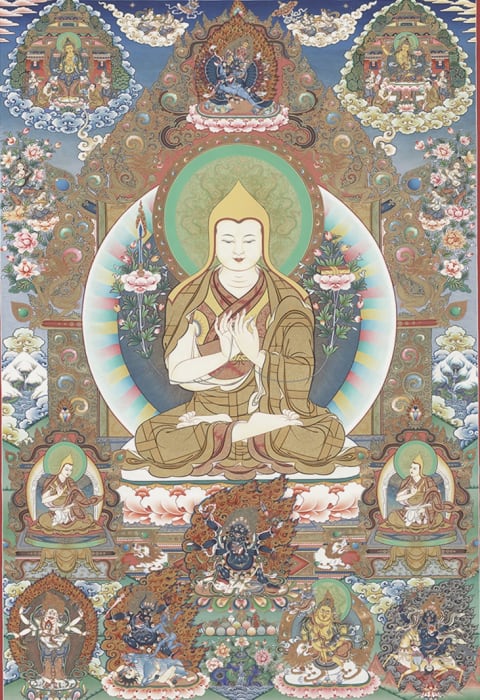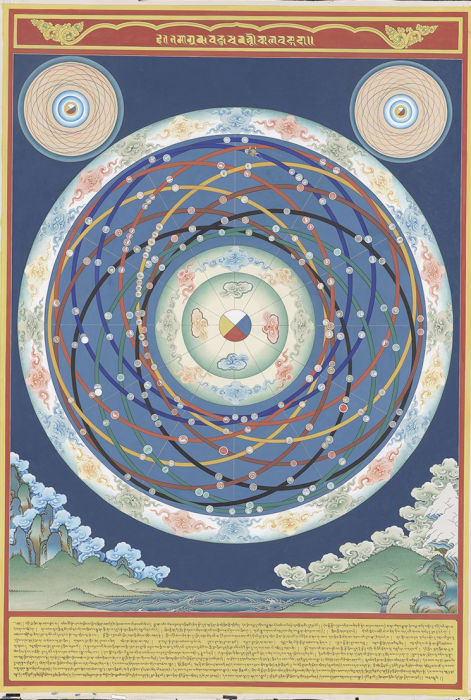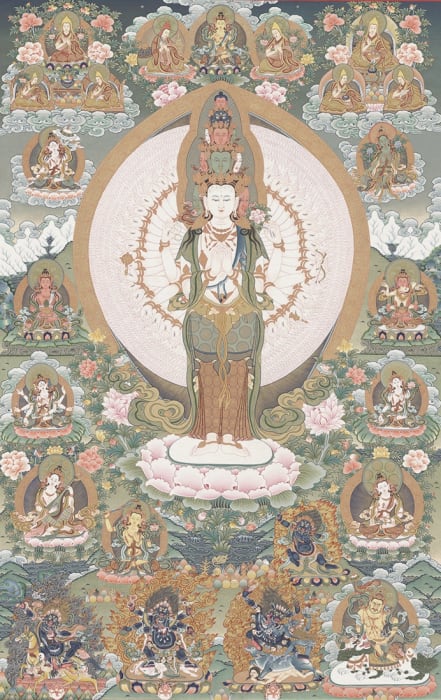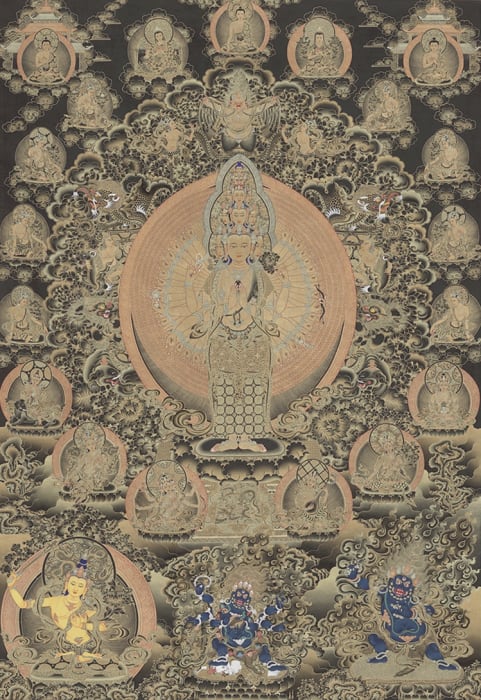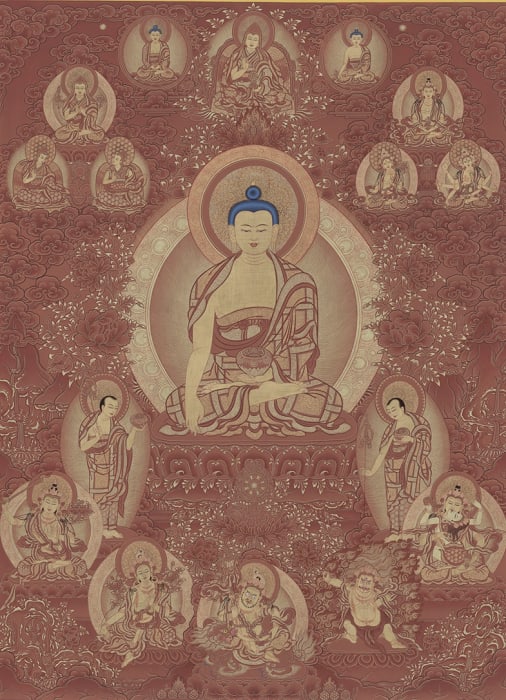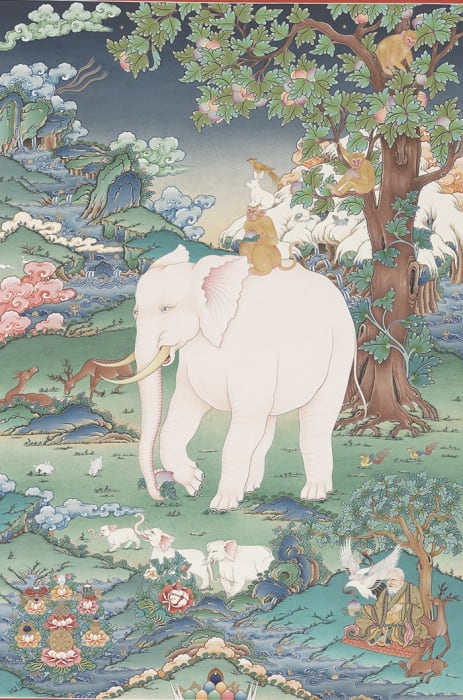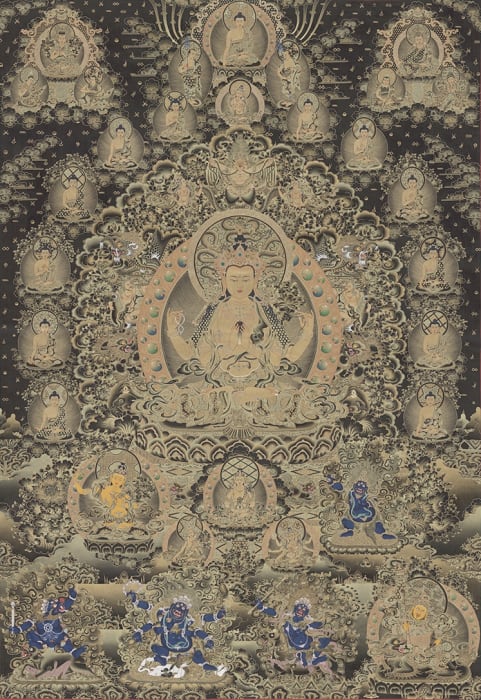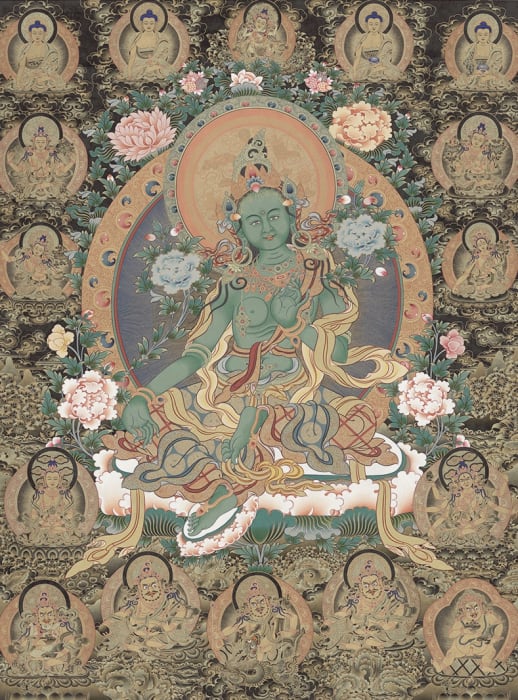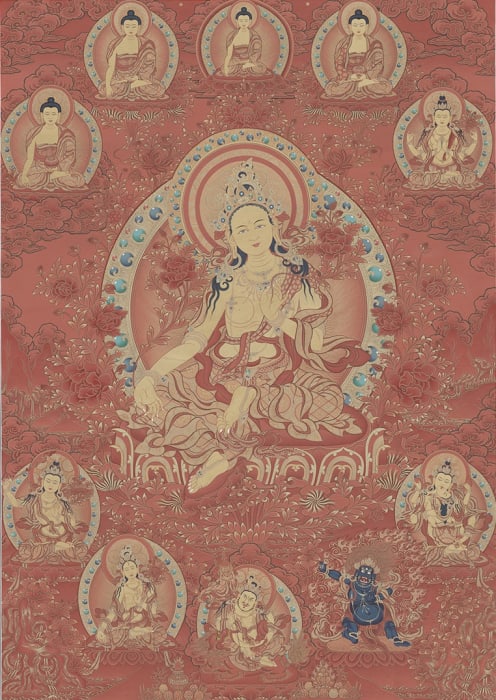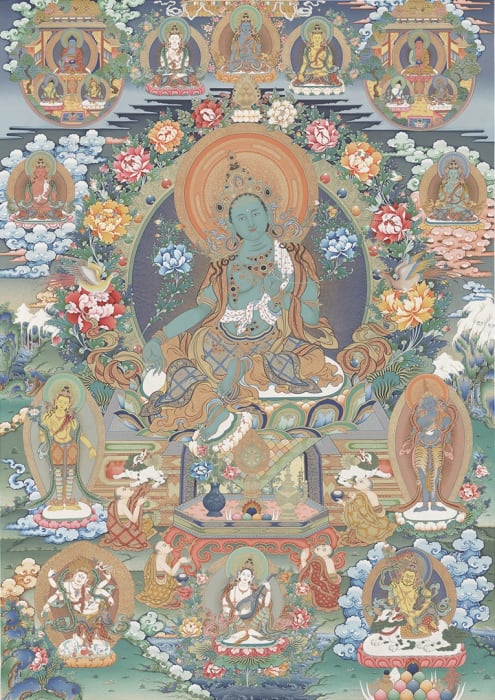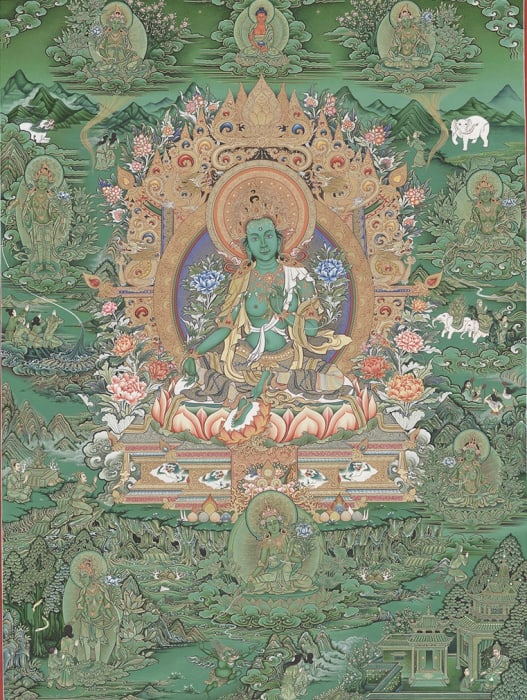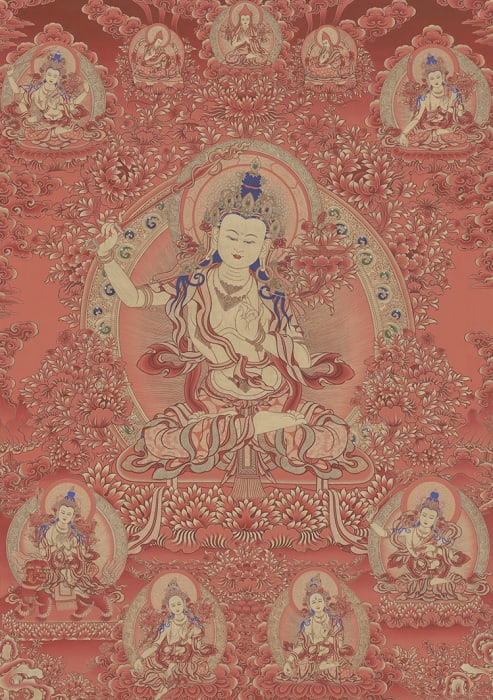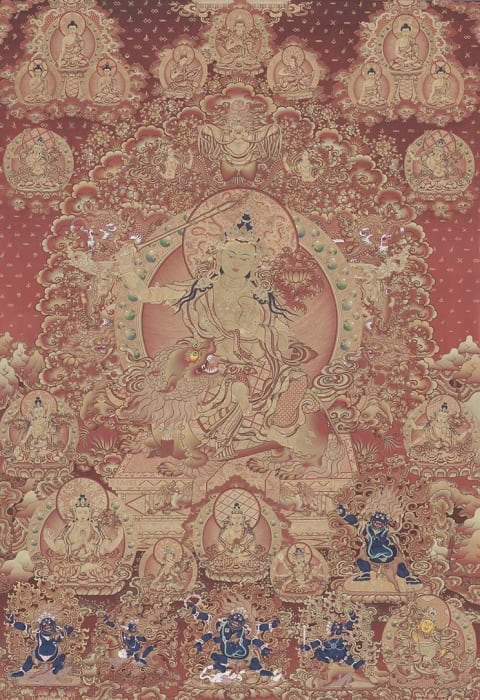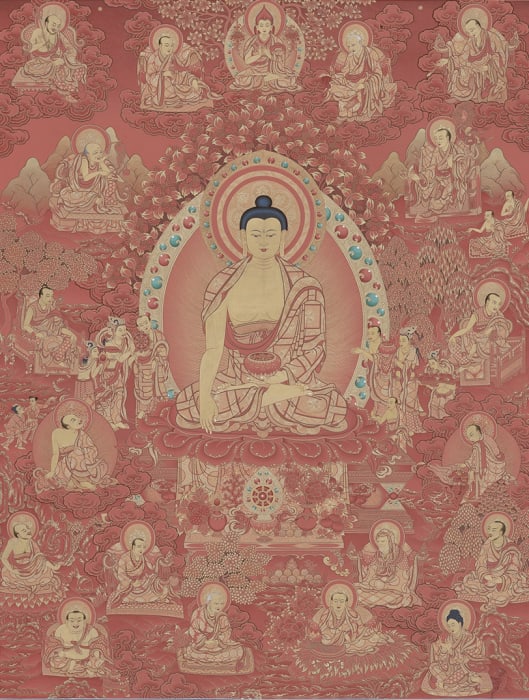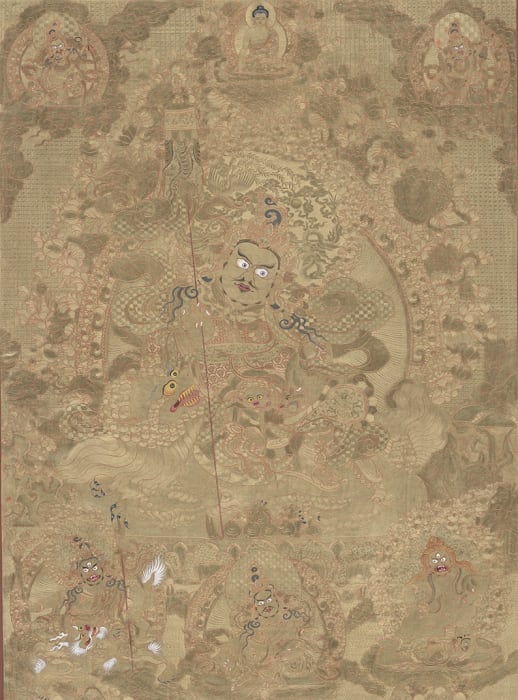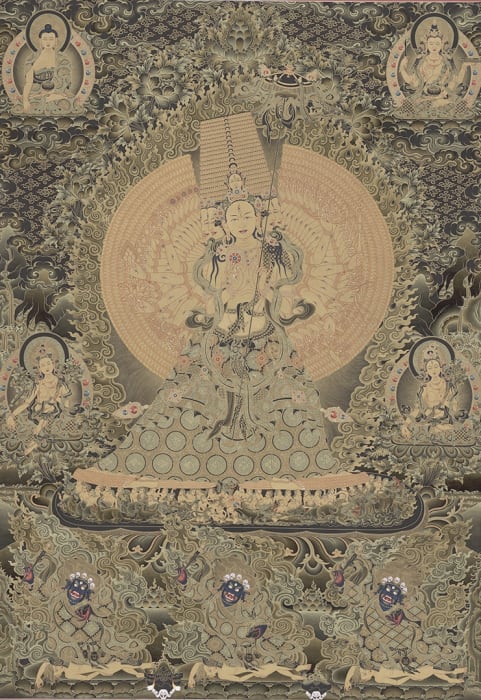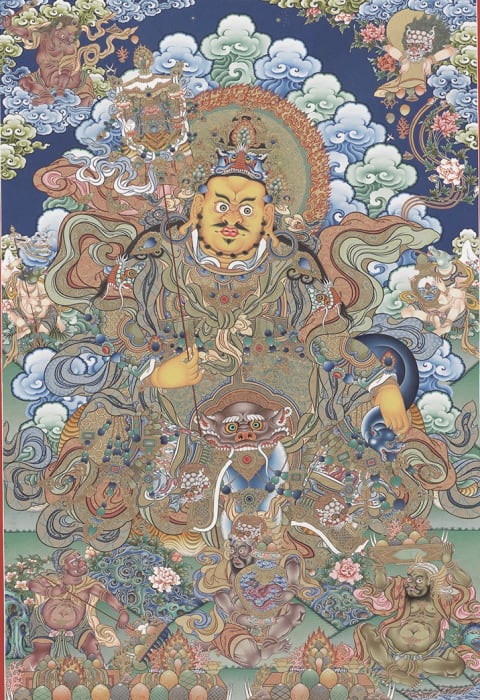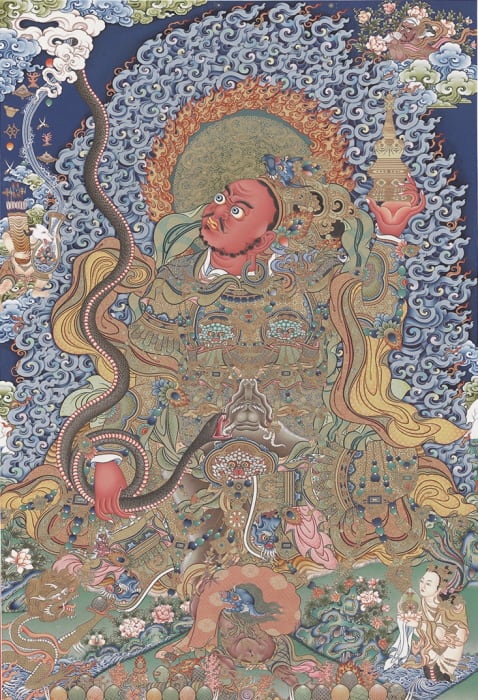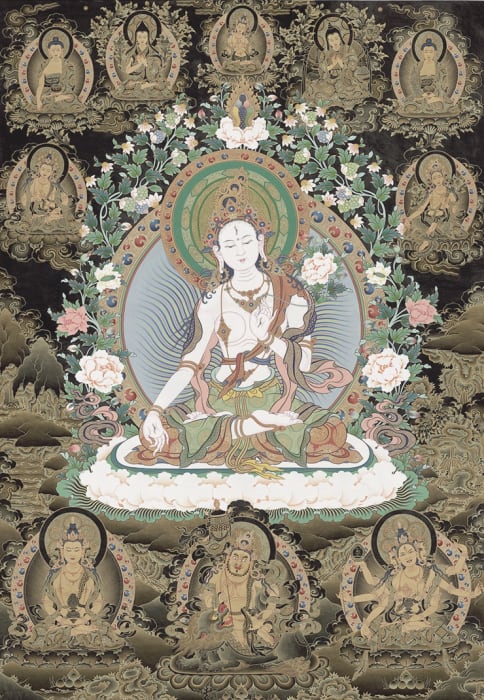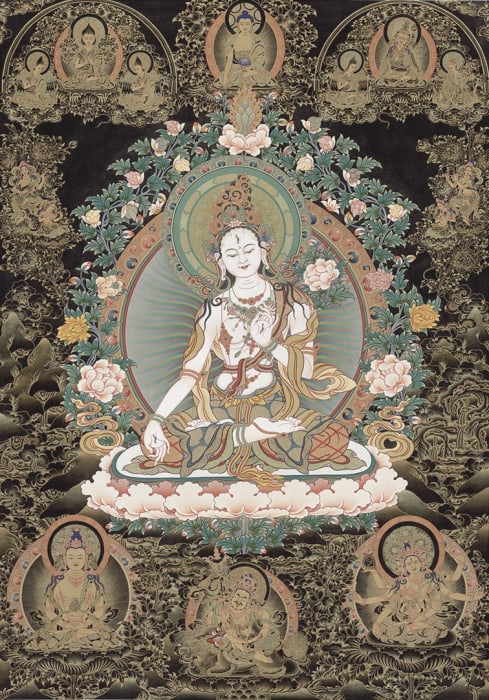Niangben China, b. 1971
-
 Vaishravana (Heavenly King with Abundant Knowledge) (Tangka in colors)
Vaishravana (Heavenly King with Abundant Knowledge) (Tangka in colors) -
 Astronomical Almanac Chart (Tangka in colors)
Astronomical Almanac Chart (Tangka in colors) -
 Astronomical Almanac Chart (Tangka in colors)
Astronomical Almanac Chart (Tangka in colors) -
 Astronomical Almanac Chart (Tangka in colors) (2)
Astronomical Almanac Chart (Tangka in colors) (2) -
 Avalokiteshvara with one thousands hands and one thousands eyes (Tangka in colors) (2)
Avalokiteshvara with one thousands hands and one thousands eyes (Tangka in colors) (2) -
 Avalokiteshvara with one thousands hands and one thousands eyes (Tangka in colors)
Avalokiteshvara with one thousands hands and one thousands eyes (Tangka in colors) -
 Avalokiteśvarawith One thousand arms and one thousand eyes (Tangka in Black)
Avalokiteśvarawith One thousand arms and one thousand eyes (Tangka in Black) -
 Buddha Shakyamuni (Red Tangka)
Buddha Shakyamuni (Red Tangka) -
 Buddha Shakyamuni (Tangka in colors)
Buddha Shakyamuni (Tangka in colors) -
 Buddha Shakyamuni (Tangka in colors) (2)
Buddha Shakyamuni (Tangka in colors) (2) -
 Dhritirashtra (Heavenly King to Uphold the Country) (Tangka in colors)
Dhritirashtra (Heavenly King to Uphold the Country) (Tangka in colors) -
 Four mythical animals living in harmony (Tangka in colors)
Four mythical animals living in harmony (Tangka in colors) -
 Four-armed GwanYin (Avalokiteshvara) (Black Gold)
Four-armed GwanYin (Avalokiteshvara) (Black Gold) -
 Four-armed GwanYin (Avalokiteshvara) (Golden Tangka)
Four-armed GwanYin (Avalokiteshvara) (Golden Tangka) -
 Green Tara (Black Gold with Other Colors)
Green Tara (Black Gold with Other Colors) -
 Green Tara (Red Tangka)
Green Tara (Red Tangka) -
 Green Tara (Tangka in Colors)
Green Tara (Tangka in Colors) -
 Green Tara (Tangka in Colors) (2)
Green Tara (Tangka in Colors) (2) -
 Happy Vajra Buddha (Hevajra) (Tangka in colors)
Happy Vajra Buddha (Hevajra) (Tangka in colors) -
 Happy Vajra Buddha (Hevajra) (Tangka in colors) (2)
Happy Vajra Buddha (Hevajra) (Tangka in colors) (2) -
 Heavenly King of Treasures (Black Gold)
Heavenly King of Treasures (Black Gold) -
 Manjushri Bodhisattva (Black Gold)
Manjushri Bodhisattva (Black Gold) -
 Manjushri Bodhisattva (Red Tangka)
Manjushri Bodhisattva (Red Tangka) -
 Manjushri Bodhisattva (Red Tangka) (2)
Manjushri Bodhisattva (Red Tangka) (2) -
 Manjushri Bodhisattva (Tangka in colors)
Manjushri Bodhisattva (Tangka in colors) -
 Shakyamuni (Red Tangka)
Shakyamuni (Red Tangka) -
 The God of Treasures/ Vaisravana (Golden Tangka)
The God of Treasures/ Vaisravana (Golden Tangka) -
 Ushnisha Sita Tapatra (Black Gold)
Ushnisha Sita Tapatra (Black Gold) -
 Ushnisha Sita Tapatra (Tangka in colors)
Ushnisha Sita Tapatra (Tangka in colors) -
 Virapaksa (Board-eyed Heavenly King) (Tangka in Colors)
Virapaksa (Board-eyed Heavenly King) (Tangka in Colors) -
 Virudhaka (Heavenly King of Growth) (Tangka in colors)
Virudhaka (Heavenly King of Growth) (Tangka in colors) -
 White Tara (Black Gold with Colors)
White Tara (Black Gold with Colors) -
 White Tara (Black Gold with Colors) (2)
White Tara (Black Gold with Colors) (2)
Niangben was born in China in 1971. Being deeply influenced by the art of Buddhism painting at
an early age, he was fascinated by the traditional art of his hometown. At the age of 12, he
began to follow Xiawu Cairang, a master of Chinese arts and crafts to learn the painting of
Thangka . He has been engaged in the research of “Regong Art” Thangka painting and Tibetan
Buddhist art and became one of the most outstanding disciples who had obtained the essences
of the teachings from Master Xiawu Cairang.
In the long-term practice of artistic creation, Niangben has not only inherited the traditional style
of “Regong Art”, but also made active explorations and bold innovations. He has been inspired
by various art painting styles. Particularly, he learned from the tonal style of “Dunhuang Flying
Apsaras” by his teacher, Master Xiawu Cairang and the hue from Tibetan Thangka. By
integrating the techniques of using gold in Regong Thangka and the traditional Chinese realistic
painting technique from Han nationality, he gradually formed the unique Thangka art style of his
own and became one of the most representative figures during the transformation stage of
Thangka art.
Niangben has won numerous art awards at national level and many of his works have been
collected by the National Museum of China, the Chinese National Academy of Arts, the
National Art Museum of China, the Chinese Arts and Crafts Museum, the State Council Office,
Beijing Olympic Organizing Committee, the Macao Special Administrative Region Government,
etc. Niangben has held several personal Thangka exhibitions in museums and exhibition center,
including the National Museum of China, Shanghai China Art Palace, Beijing Prince Kung’s
Palace Museum, Shenzhen Guanshanyue Art Museum, and the National Art Museum of China.




















